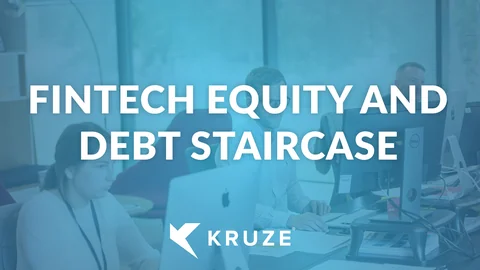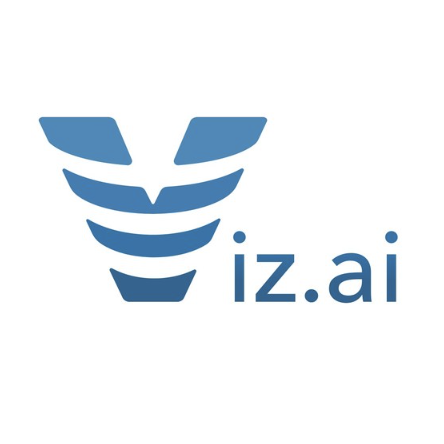
The journey from idea to scale in the fintech sector is uniquely capital-intensive. Fintech startups need extra capital because they face substantial upfront costs to develop secure and scalable technology platforms. There are also legal costs associated with regulatory compliance and marketing costs to acquire customers in a highly competitive space. In addition to these requirements, fintechs often require additional capital to fund any loans or financial products that they offer.
That means that funding a fintech startup requires a strategic blend of equity and debt financing. This “equity and debt staircase” is a proven framework that helps fintech startups navigate growth, manage risk, and optimize their capital structure at every stage.
What Is the Fintech Equity and Debt Staircase?
The “debt and equity staircase” is a coordinated approach to raising both equity and debt, with each step up the “staircase” unlocking new financing opportunities and partners. The process begins at the seed stage, and as the fintech works its way through subsequent growth stages, it matches equity and debt until the later stages when the company has the resources to assume larger debt.
The Stages of the Equity and Debt Staircase
Let’s look in more detail at each of the “steps” in the equity and debt staircase:
Seed Stage: Build the foundation with equity
- Most fintech startups begin with seed equity rounds, which are larger than traditional startup rounds, to meet initial operating costs and fund early financial products before they can unlock debt financing options. For example, according to CB Insights, the median deal size for all startups in Q1 2025 was $3.5 million, while the median for fintech startups was $4.1 million, and the average fintech deal size was $17.7 million.
- Early equity investors (angels, seed VCs) provide not just funds but also credibility, which is crucial for attracting future debt partners.
- The larger seed capital is important because fintechs often need to prove out their lending or funding model – demonstrating product-market fit and their ability to generate and service loans, merchant cash advances (MCAs), or other products – before debt partners are willing to participate.
- Fintech founders often accept higher dilution upfront by raising more equity capital at the seed stage, which allows them to avoid the mid- to high-20% interest costs of early-stage debt, which could cripple getting the startup successfully launched.
Post-Seed: Introducing debt
- Once initial equity is secured, fintech startups seek debt partners to fund their lending activities or financial products.
- Lenders typically require that the startup has reputable equity backers, as they only advance 75-80% of the loan amount; equity fills the remaining gap.
- Debt at this stage is often structured as venture debt or credit facilities, with terms based on the startup’s equity backing and early traction.
Series A: Scaling both sides
- With growth, fintechs raise larger Series A rounds ($5-15 million), which then allows them to unlock more debt capital. That amount of funding could allow the startup to take on $5-8 million in additional debt.
- Debt and equity continue to work in tandem: equity supports business expansion, while debt funds loan portfolios or financial products.
- Lenders become more sophisticated, and the cost of capital begins to decrease as the company’s track record develops.
Series B and beyond: Institutional capital
- At Series B and C, equity rounds can reach $25–50 million or more, enabling access to institutional lenders and even bank-style loans.
- Debt facilities can scale to $25–100 million, with lower interest rates and more favorable terms due to improved risk profiles and operating history.
- At this stage, fintechs may also tap into special purpose vehicles (SPVs – legal entities created to pool capital from multiple investors) or even Wall Street offerings, which can significantly reduce their overall cost of capital.
Why Do Fintechs Use the Staircase Approach?
The equity and debt staircase lets fintech startups fund both operations and loan capital more efficiently. The advantages include:
Balanced capital structure
- Combining equity and debt enables startups to access the capital they need without excessive dilution or unsustainable debt loads.
- Each financing type serves a distinct purpose: equity for long-term growth and credibility, debt for funding operational lending and/or financial products.
Risk mitigation and credibility
- A hybrid funding approach spreads financial risk and demonstrates to future investors and lenders that the company is managing capital responsibly.
- Both equity and debt partners provide assurance that the other is committed, creating a reinforcing cycle of confidence.
Strategic flexibility
- The staircase approach helps fintechs extend their runways, reach key milestones, and optimize valuations for subsequent rounds.
- Venture debt, in particular, enables fintechs to bridge the gap between equity rounds, letting startups scale without unnecessary dilution.
Accounting and Technical Considerations
Fintech startups face complex accounting challenges as they layer debt on top of equity. They must track multiple, intertwined rounds of equity and debt financing, each with different terms and investor requirements. Some of the accounting issues fintech startups that use this method face include:
- Debt modifications. Refinancing, restructuring, or issuing convertible debt can trigger complex accounting and disclosure requirements, often involving hidden costs or non-cash impacts.
- Revenue recognition. Different revenue streams, such as transaction fees and interest income, require specialized revenue recognition methods.
- Compliance. Accurate reporting, tax optimization, and regulatory compliance become increasingly critical as the capital stack grows.
Common Pitfalls and Best Practices for Debt and Equity Staircases
Pitfall |
Best Practice |
|---|---|
Over-leveraging with debt |
Use debt to complement, not replace, equity rounds |
Excessive dilution |
Layer debt after equity to minimize ownership loss |
Poor lender fit |
Choose lenders who understand your business model |
Ignoring technical accounting |
Engage experts early to navigate complex transactions |
Work with Experts
The fintech equity and debt staircase is a strategic roadmap for startups to efficiently fund growth, manage risk, and optimize valuation at every stage; however, it’s a complex process with numerous moving parts. Partnering with an accounting firm experienced in fintech helps your startup not only stay compliant but also present your financials in a way that maximizes investor and lender confidence. If you’re a fintech founder navigating the equity and debt staircase, our team is here to help you climb every step.









